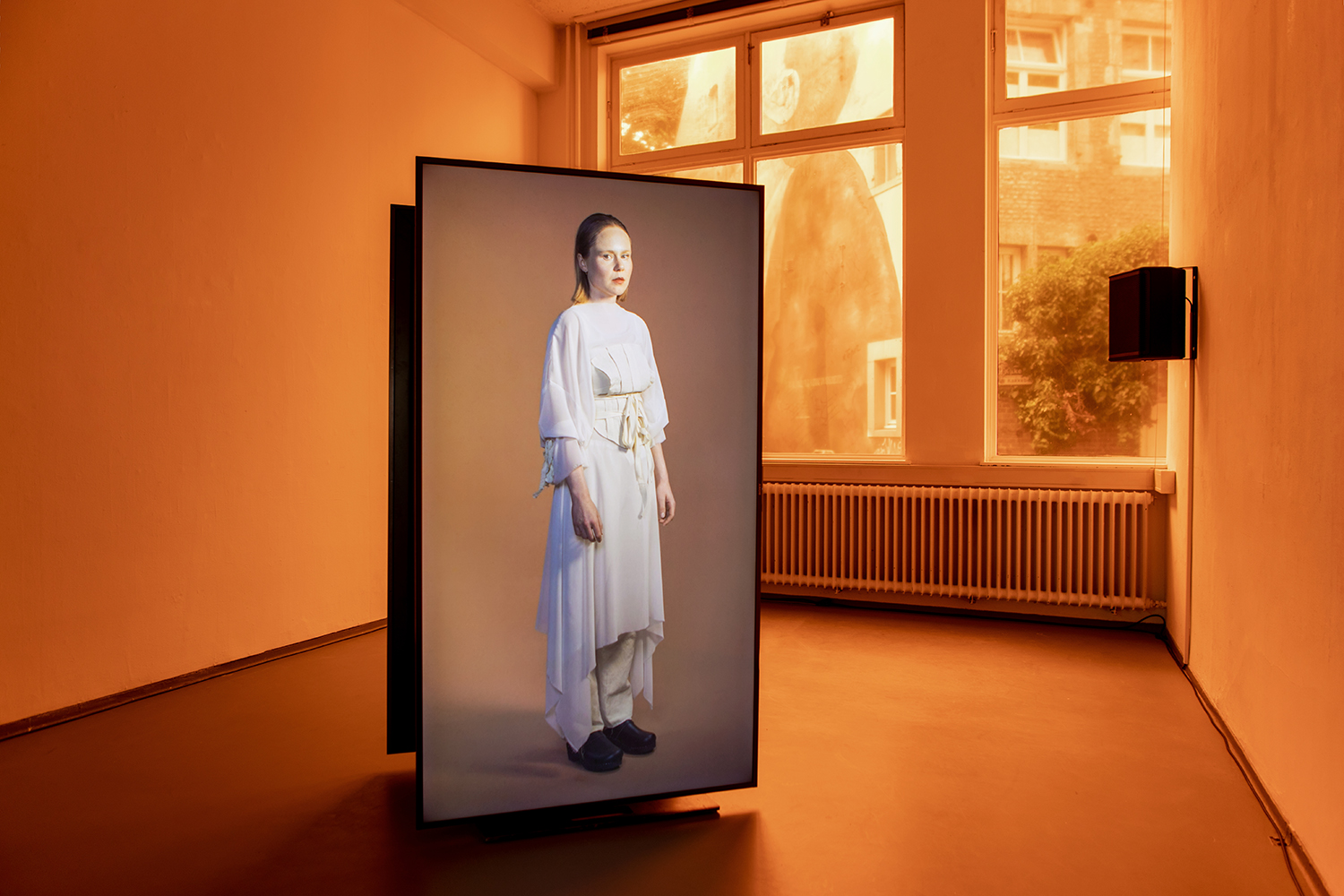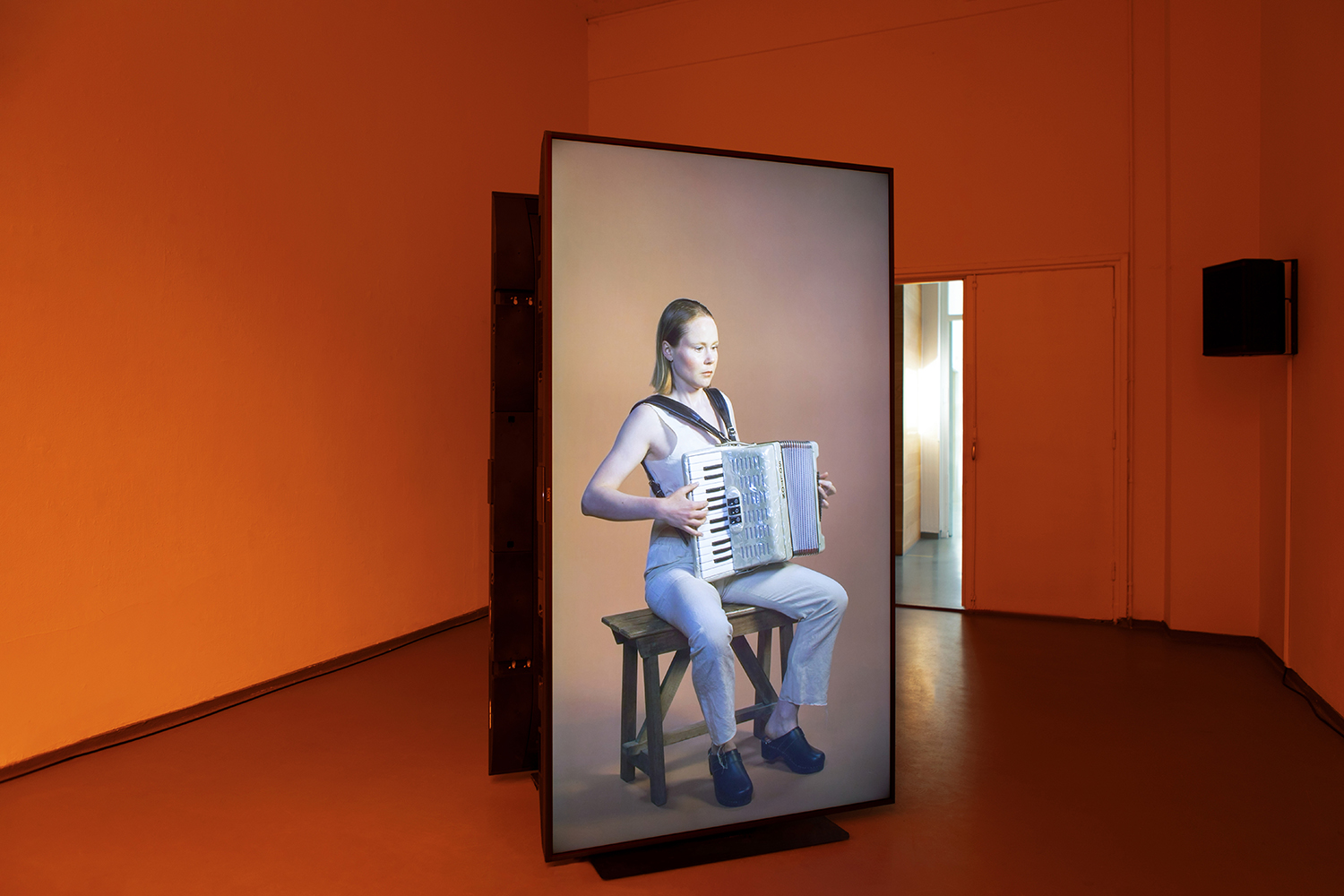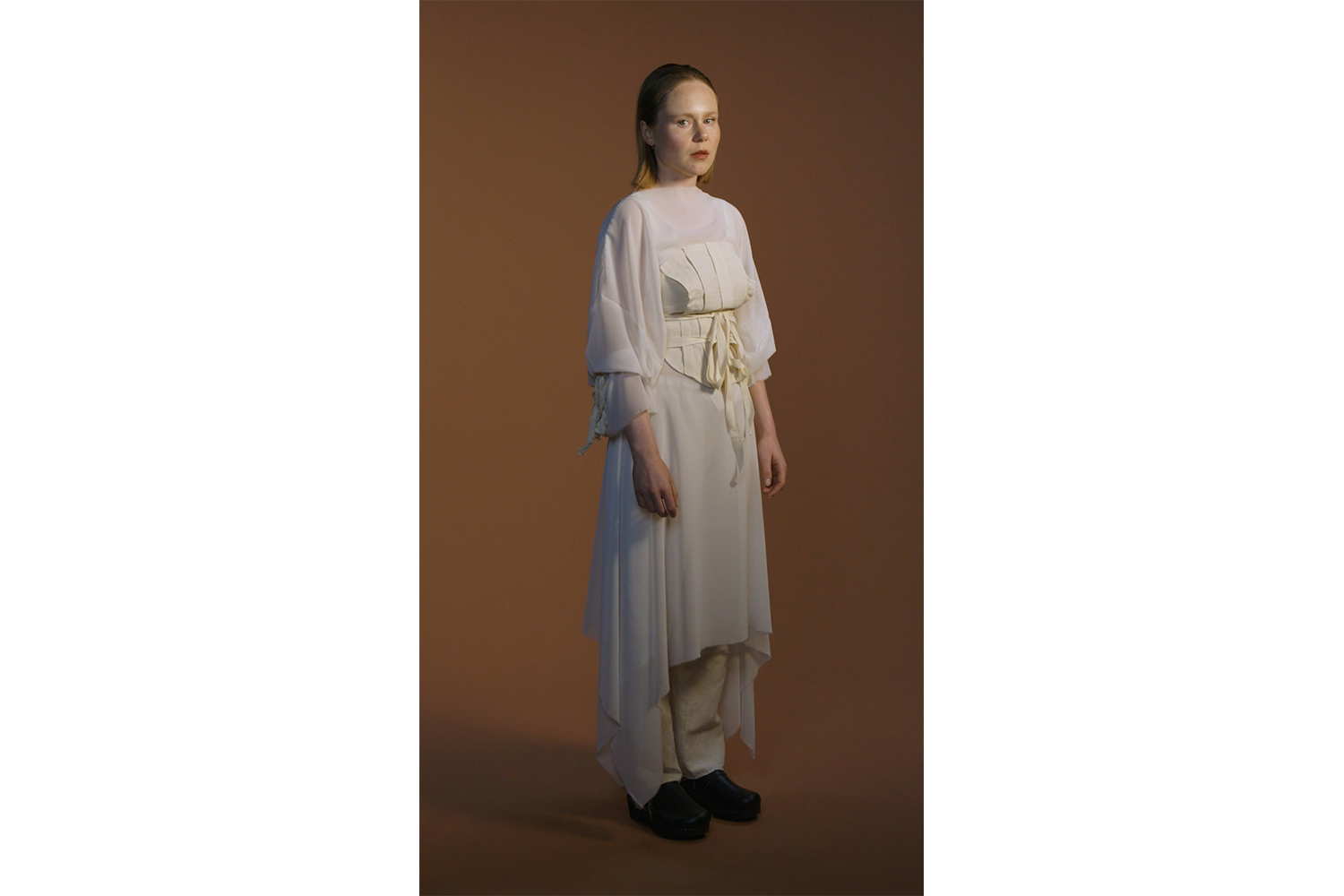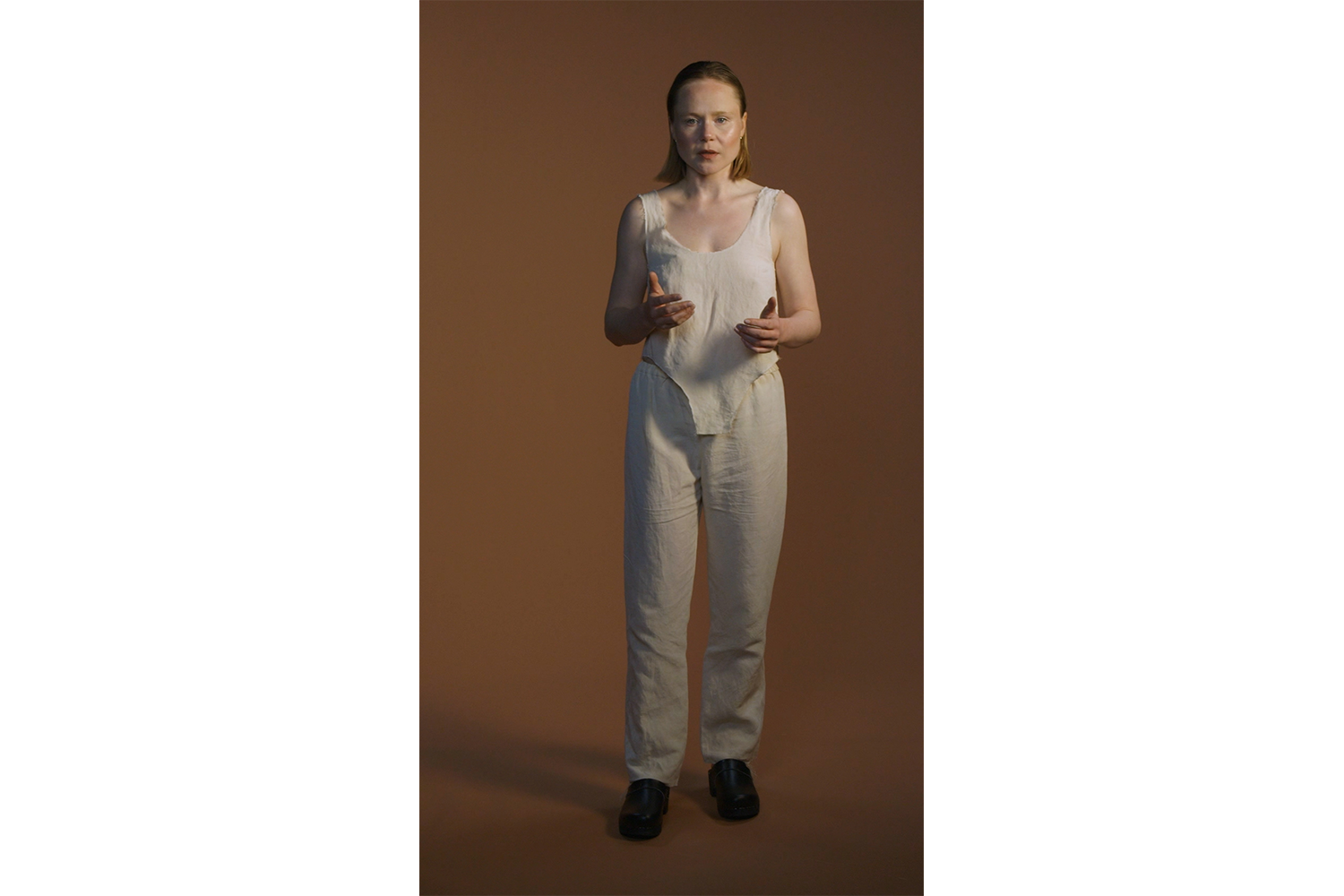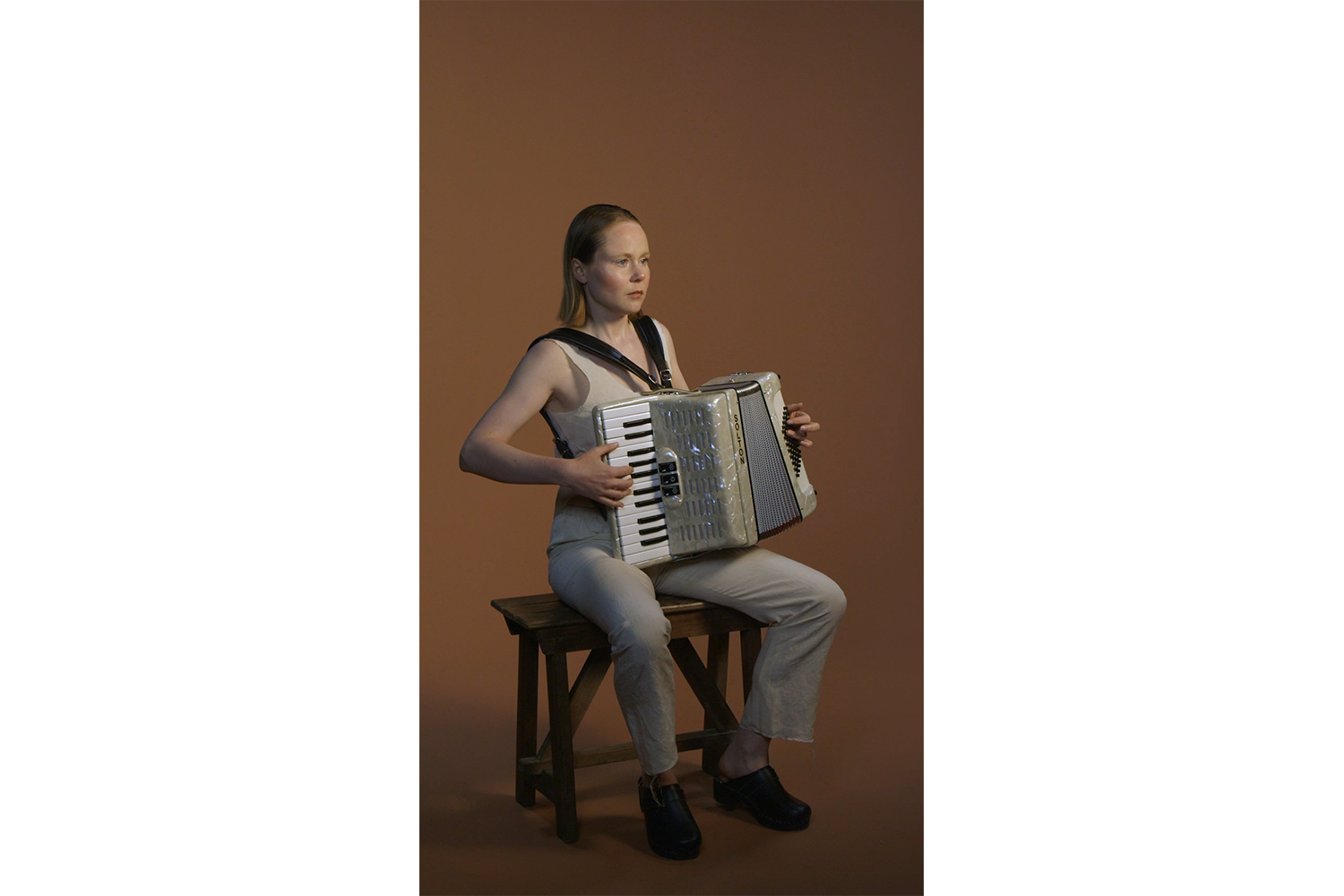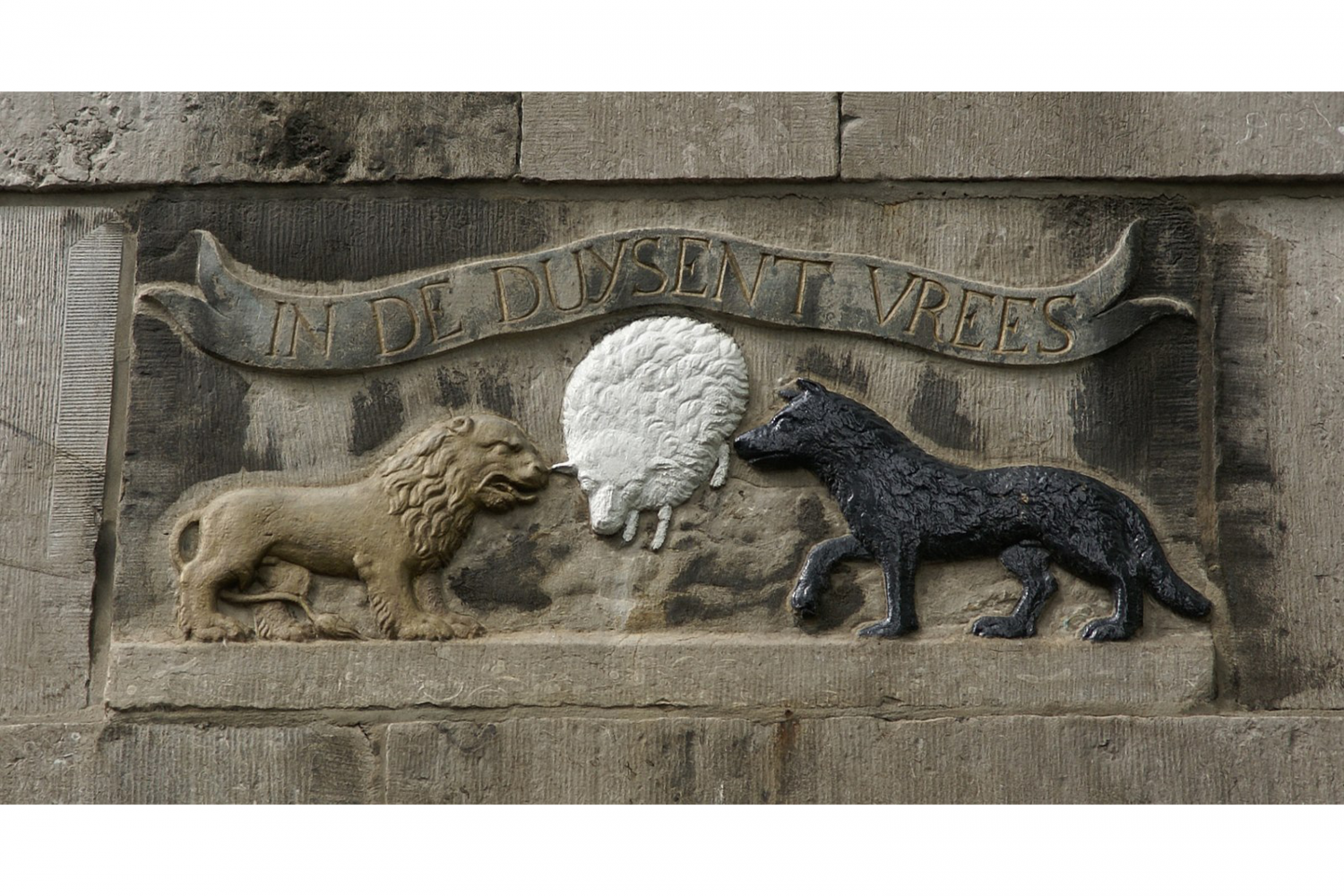In de Duysent Vrees, two-channel video, 6:59 min., Maastricht, 2022
Click here to watch an excerpt
Click here for a Metropolis M press review
Andrea Karch’s filmed performance In de Duysent Vrees (2022) is an inquiry into the roots and rhetoric of what Natascha Strobl terms German “radicalized conservatism.” Germany’s far right “revolutionary movement” harks back to the so-called Conservative Revolution of the Weimar Republic that never came to fruition. Its legacy flourishes nevertheless in the country’s increasingly powerful new nationalist networks and across the European New Right. Karch looks at how neoconservative political parties have successfully recast themselves as radical dissidents, in part by coopting the language and ideals of the left. Her work plots the intersections between neonationalist and liberal critiques to expose how both extremes feed on fears of impending crises and capitalist collapse.
The title In de Duysent Vrees (which translates roughly as Amid the Thousand Fears) borrows from the inscription on a 1741 Maastricht gable stone. The plaque, which depicts a lamb threatened by a wolf and a lion, obliquely references a Feindbild, or an image of a fabricated enemy that comes to embody racial paranoia. Karch’s character conflates ideas from the left and the right in a tirade that lends insight into what motivates some individuals to embrace drastic political views. It is accompanied by an accordion rendition of “Bella Ciao,” an Italian folksong adopted by the Italian resistance during WWII that has since become an outmoded expression of socialist ideals. In de Duysent Vrees raises the question of what a meaningful antifascist or oppositional leftist movement could look like today and how we might begin to envision it.
Text: Amanda Sarroff
Cinematography: Emiel Chung
Camera assistance: Claudio Tola
Fashion: Philipp Schueller
Thank you: Bruno Alves de Almeida, Hicham Khalidi, Rutger de Vries, Zhiyuan Yang
Image of gable stone: Otter, 29 May 2010, Own work; Wikipedia CC-BY-SA-3.0-NL
